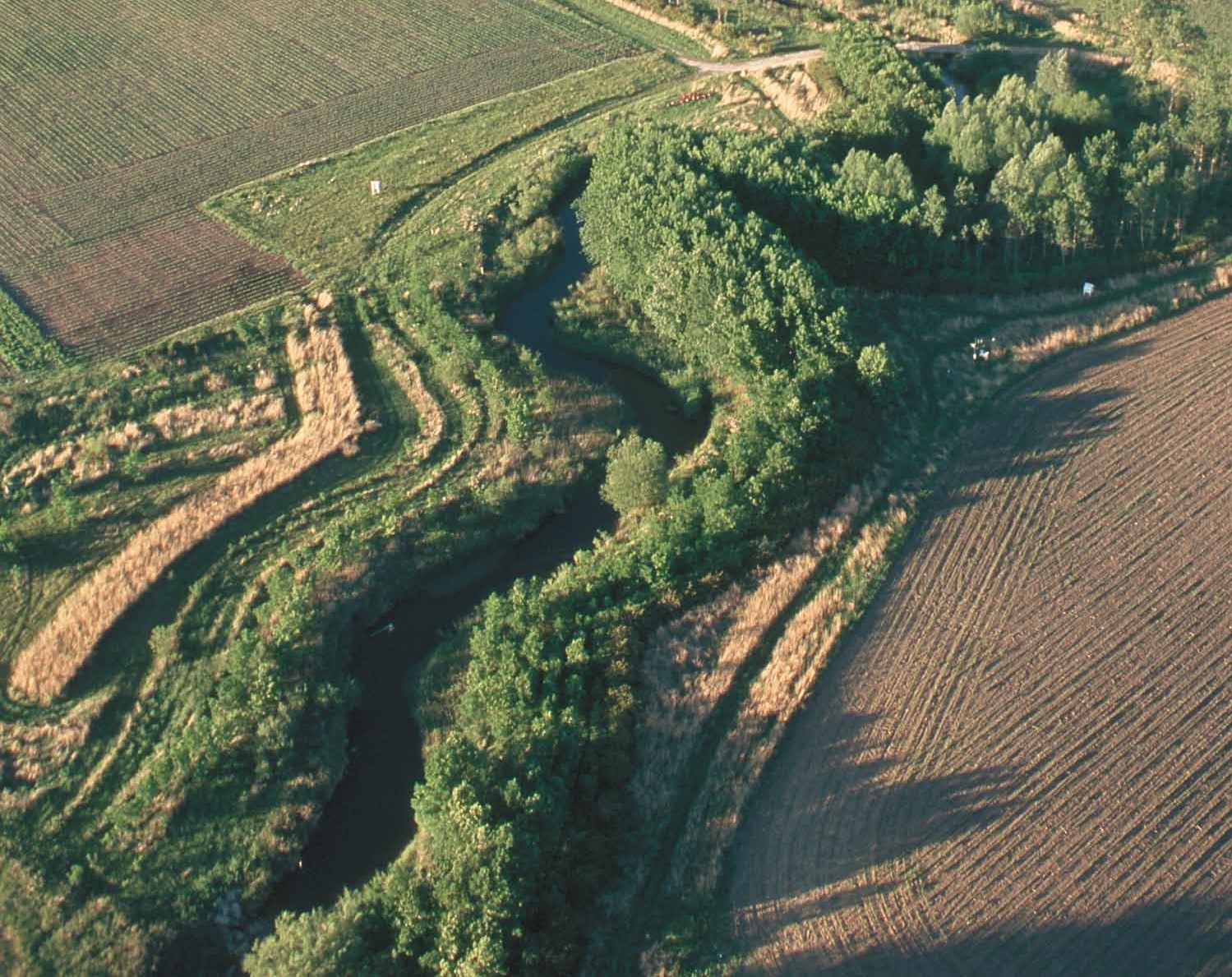 Nature-Based Solution for Addressing Water Quality in Iowa | Photo Credit: USDA
Nature-Based Solution for Addressing Water Quality in Iowa | Photo Credit: USDA
Providing the World with Food and Water through a Changing Climate
A recent American Security Project post analyzed the increasing threat of climate change on food and water security. Rising temperatures around the globe not only diminish food and water supplies but also favor the spread of food and waterborne viruses and bacteria that affect plants, animals, and humans.
Infectious diseases from these viruses have grave impacts on human health. Declining food and water availability only exacerbates the issue by increasing the malnourished population. Economic burdens include costs associated with increased infectious disease spread and steps to address food and water security. As these necessities become scarce due to rising temperatures, the likelihood of competition over dwindling supplies will increase. Solutions to combat heat’s effect on food and water supplies are crucial as trends suggest more frequent days with extreme heat.
Where do we go from here?
Long-term climate change solutions for limiting or even reversing the increase in temperature are key for preventing the continued depletion of food and water and spread of infectious diseases. However, global initiatives to combat extreme heat are challenging to implement and execute, and they take time, making cost-effective mitigation efforts essential.
Public awareness campaigns from local to international levels stressing the increasing likelihood of foodborne disease transmission due to temperature change are a cost-effective way to limit their spread. Highlighting the importance of thoroughly washing hands, surfaces, and produce when cooking, keeping food at recommended temperatures, and cooking food thoroughly are all proven solutions that can minimize the risk of contracting a foodborne illness. Additionally, strong surveillance and monitoring systems for public health, clinician, and laboratory use are essential. All health care sectors must have access to integrated public health surveillance systems, which track disease incidence, symptoms, and intervention success, to stay current with trends, so they can better identify and diagnose cases, treat patients, and target the spread of viruses to contain them.
Further, global priorities for climate-resilient water and sanitation interventions must be established. Communities already threatened by food or water scarcity must be prioritized as they will feel impacts most rapidly. It is equally important to prioritize populations heavily reliant on a food item that is particularly vulnerable to climate change or infection.
Existing Programs Addressing this Threat
ACToday is a project led by Columbia University to maximize food production and reduce crop loss through changes in climate. Specifically, the program seeks to build systems that precisely predict and manage flood and drought risks, improve food industry-related financial practices, and pre-emptively prepare relief efforts in case a food crisis emerges. One project piloted is an index insurance project based on predicted weather. If rainfall during critical crop season doesn’t reach a designated threshold, farmers are automatically reimbursed their insurance without needing to file a claim. The program’s partners, the World Bank and World Food Program, have successfully begun this project in Senegal and Ethiopia, and ACToday has enacted the program in Malawi, Zambia, and Mozambique.
Nature based solutions () are used to address clean water storage and security. One example is watershed restoration and conservation through land management, currently used in Kenya to filter contaminated water with a predicted return of $21.5 million in wastewater treatment savings. Other examples include green infrastructure, like rain gardens and wetlands, which help reduce flood risks and increase water quality in urban areas and can ensure a steady water supply in rural areas.
Solutions protecting fish stocks are of particular importance, as their depletion is interconnected with both food and water security. Contaminated water makes fish susceptible to infectious diseases, many of which can be passed to humans. Filtering and disinfecting water supplies, keeping fish in quarantine for a designated period before introducing them to fisheries, using fish food free of pathogens, and disinfecting eggs are all solutions that can be used jointly to minimize the threat of infectious disease on fish stocks.
Opportunities for Sustainability
Food and Agriculture Organization of the United Nations released a report entitled “how to feed the world in times of pandemics and climate change?” Specifically focusing on opportunities for innovation in livestock systems, the report identified key domains of sustainability.
- Resilience to pandemics: Food and nutrition security will require supply chain diversification across socioeconomic settings. This helps end the over-reliance of a single entity on the entire supply chain, which in times of breakdown leads to severe loss. Livelihoods and economic growth must also be addressed with social services to make up for lost revenue for food workers due to a pandemic.
- Preventing future pandemics: Surveillance and monitoring on microbial use, control over who’s in contact with livestock and where sick animals are stored, and the digitization of rapid response risk communication are essential. Accelerated innovation for automated steps in livestock systems, minimizing human contact, and improved sanitation and operating procedures at livestock and food markets are needed.
- Becoming more climate resilient: Reversing land degradation and protecting water sources are critical for resilience. Improved preparedness for a climate crisis including warnings, emergency feed stocks, insurance, and diversified protein sources are essential.
- Climate change mitigation: Pausing the rise in global temperatures will require promoting low-carbon food production, boosting the efficiency of existing systems, and minimizing wastes through recycling efforts
Bringing it all Together
To meet the threat of infectious disease and climate change on food and water Simultaneously, pledges to lower global temperatures must be met, as increasing heat favors the spread of new bacteria and viruses. By addressing immediate and long-term solutions it is possible to lessen the threat of climate change induced infectious diseases on global food and water supplies.





